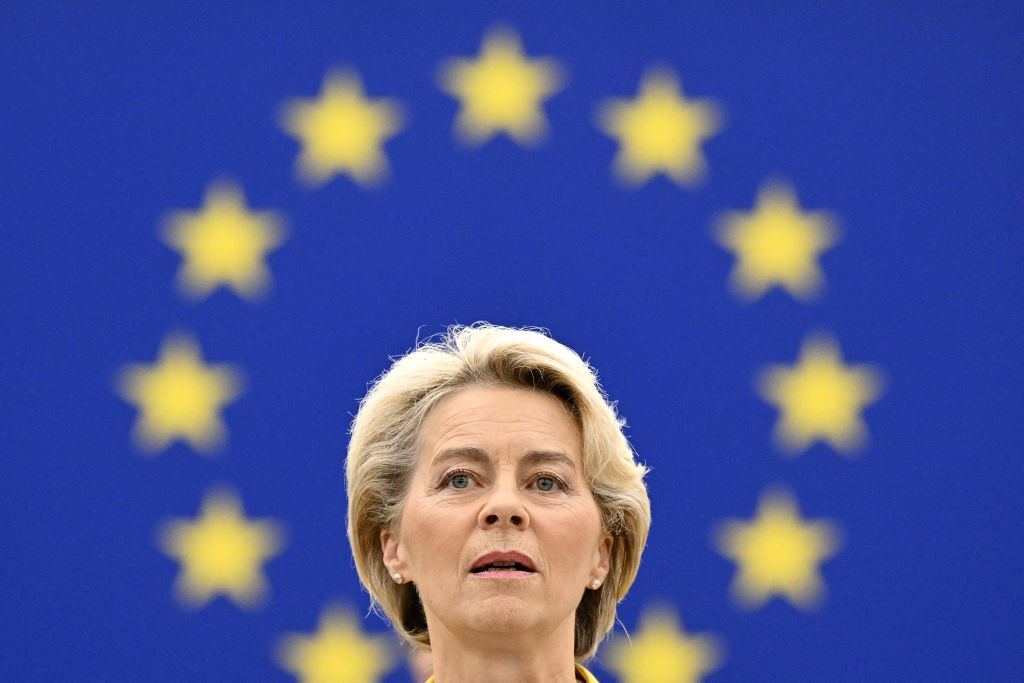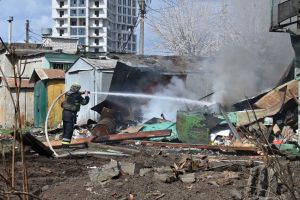Can Ukraine sustain a war effort that is proceeding far better than most military analysts ever expected? Part of that answer, of course, depends on the extent to which the Ukrainian army can keep their troops in the field equipped, supplied, and motivated. That challenge comes as the Russian military increasingly relies on so-called “kamikaze drones” to strike deep into Ukrainian territory (on October 17, a Russian drone attack killed four people in Kyiv during the morning rush hour).
But another factor that will determine success or failure is whether Europe remains onboard — or, more to the point, whether Europe’s support to Kyiv will continue as the war enters a dreary, unforgiving winter. American support is essentially baked in to the cake: last week, Washington announced another $725 million in security assistance to Ukraine, increasing the US total to more than $17 billion since February. Yet the backing of European governments depends on something beyond the control of any human being: the weather.
Right now, there isn’t much for Kyiv to worry about. Notwithstanding Zelensky’s constant lobbying for Europe to do more, particularly on the weapons delivery front, it’s safe to assume he views the Continent’s solidarity as a relative bright spot. More than eight months after the first shots were fired, there hasn’t been much backsliding on the part of the Europeans (even if it’s true that their military and financial aid to Kyiv is peanuts compared to what the US has provided). A recent poll conducted by the YouGov-Cambridge globalism project found that the majority of Europeans are prepared to withstand a higher cost of living in order to maintain economic sanctions against Moscow.
But nobody can be confident this support will last if natural gas prices keep rising (prices are already up by more than 200 percent from the same time last year), factories start to shut down due to insufficient gas supplies, and Europeans have to choose between putting food on the table and turning up the thermostat. This was, after all, the motivation behind Russian President Vladimir Putin’s slashing of natural gas exports to the Continent: place such a financial strain on European governments that they begin to reassess whether rooting for a total Russian military defeat is worth the cost of angry people shivering under their blankets.
So far, Putin’s strategy hasn’t worked. If anything, it has backfired, burning Moscow’s bridges to the West, annihilating Russia’s reputation as a reliable energy supplier and pushing the Russians into a weak position as they negotiate prices with China.
The European Union, as bureaucratic as it is, deserves the lion’s share of the credit for undermining Putin’s plans. If you’d told me earlier in the year that Europe would not only diversify but essentially cut its dependence to Russian oil and gas, I would have laughed in your face. Yet this is exactly what the Europeans have done. The Continent has proved that it can work quickly when it needs to. European officials, on both a bilateral and a multilateral basis, have signed contracts with other gas suppliers, including Algeria, Azerbaijan, Angola, Egypt, Israel, and Qatar, to replace Russian energy. European imports of liquified natural gas (LNG) have increased by 65 percent over the first eight months compared to the same time last year — with much of that supply coming courtesy of the United States, which is now the world’s largest LNG exporter. This has helped push the Continent’s gas storage levels above 90 percent, ahead of schedule. European governments are also enacting reforms on the demand side, with Italy, France, and Germany all enacting measures that would conserve much-needed energy.
Europe possesses enough gas to get through winter. But depending on how bitter the season is, scrounging enough gas supplies to get through the next winter, 2023-2024, could be a much more difficult task. The International Energy Agency assesses that in the worst case scenario (high gas usage in the EU, Russian gas completely cut, and low LNG imports), the EU’s gas storage capacity could dwindle to 5 percent by February 2023. The EU would then be confronting a situation where filling up the tank during the summer months is an even more onerous exercise. And even more so if China, which isn’t using as much LNG today due to an economic slowdown, reverts back to its normal status as an energy-hungry giant.
The EU, in other words, isn’t out of the woods. It could be staring at an energy crisis that is even more destabilizing to the bloc — and its support for Ukraine — than it is today. EU Commission President Ursula von der Leyen can see the writing on the wall, counseling national governments to enter a collective buying arrangement to avoid Europeans fighting amongst themselves for gas. “There is broad support that next spring, at the end of the winter when our storages will be depleted, it is of paramount importance that we have a joint procurement of gas so that we avoid [outbidding] each other,” von der Leyen said at a recent press conference.
The Ukraine war could very well persist for years to come. The question on everyone’s minds is how long the EU will be able to sustain its unity on Kyiv’s behalf if inflation and recession sweep over the land.


















